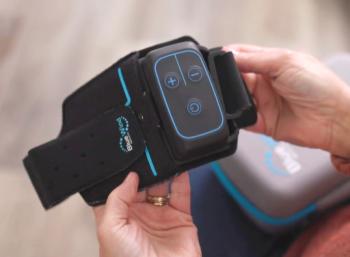
Considering buying a practice? Read this first.
Jonathan Kaplan, MD, MPH, reflects on what he learned from buying a plastic surgery practice.
Editor's Note: Welcome to Medical Economics' blog section which features contributions from members of the medical community. These blogs are an opportunity for bloggers to engage with readers about a topic that is top of mind, whether it is practice management, experiences with patients, the industry, medicine in general, or healthcare reform. The opinions expressed here are that of the authors and not UBM / Medical Economics.
Five years ago, I bought a plastic surgery practice in the Pacific Heights neighborhood of San Francisco. More recently, I was asked to give a presentation describing that experience. It gave me the opportunity to reflect on my decision to move from Louisiana, as well as all of the business and marketing decisions since the move. In preparation for my talk, I had to objectively review the growth of my practice. The number of patients I retained from the previous surgeon and the revenue generated by that cohort of retained patient was surprising. Here’s what I learned.
A little background
After finishing my plastic surgery fellowship at Cleveland Clinic in 2007, I returned to my home state of Louisiana. The after-effects of Hurricane Katrina pushed a significant portion of the population from New Orleans to Baton Rouge. As such, one of the community hospitals in Baton Rouge, Our Lady of the Lake Regional Medical Center (“the Lake”) was looking for a plastic surgeon to help cover some of the facial trauma calls in the area. But the Lake needed more than just call coverage.
In the ensuing years after Katrina, this community hospital became one of the largest providers of graduate medical education in the state. Hiring a plastic surgeon was one of the initial pieces to that puzzle. As the new program coordinator in Baton Rouge, I helped formalize the Baton Rouge rotation for the plastic surgery fellowship training programs of LSU and Tulane that were displaced from some training hospitals in New Orleans.
I enjoyed my six years in Baton Rouge as an employee of the Lake. But as I started to build a cosmetic practice, I realized I needed/wanted my own operating room to provide a more personalized VIP experience for my patients. This tends to be the natural evolution of a plastic surgeon: start out mostly performing reconstructive procedures, fighting with insurance companies and then realizing that cosmetic patients wake up happy and appreciative and insurance companies are no longer part of the equation.
At some point, you recognize there’s no nobility in banging your head against the wall for payments that suggest all of your training and expertise really aren’t worth that much. Why put up with that condescension when you have an alternative that allows you to take care of patients, eliminate all that’s awful about medicine from your life and just enjoy the vocation you’ve chosen? If that’s wrong, then I don’t wanna be right!
The search for an operating room
By the end of my six-year stay in Baton Rouge, my wife and I were ready to make a move. Since I was an employee, I didn’t have a lease or guaranteed money I would owe the hospital. The other employees in the office would have the option of working in other departments in the hospital so no one would be fired with my leaving. With essentially no financial strings attached, and no kids, this seemed like the perfect opportunity for my wife and I to start a new life in a new place.
And with a couple of options found through plastic surgery job listingsâ-âjunior associate to another plastic surgeon or taking over an existing practice with an in-office operating roomâ-âwe chose taking over an existing practice with a AAAASF-accredited operating room. That opportunity just happened to be in San Francisco. Not bad.
Valuation of an existing plastic surgery practice
After speaking with the owner of the practice over the phone, we decided to fly to San Francisco to visit the practice. It was everthing we were led to believe. The office was clean, fairly up to date, adjacent to a hospital and had a view of the Golden Gate Bridge. And most importantly, there was an accredited office-based operating room. The reality of being in a more competitive environment quickly set in. There were a total of seven plastic surgeons in the building, two of whom also had an in-office operating room.
I expressed my continued interest in the practice and the seller made an offer. He based the purchase price on net revenue from injectibles (Botox and fillers) over the course of a year. In other words, 1) how much did the practice make in one year from Botox and fillers, 2) then subtract the cost of the Botox and fillers. Oh, and then he multiplied that by two. Apparently that’s a thingâ-âa valuation based on multiples. The magic number was $191,000.
To ensure the accuracy of this number, the seller’s QuickBooks account and tax records from the previous three years were reviewed by my accountant and attorney. Their exact words were, “This seems too good to be true, but it is true.”
And to the credit of the seller, he based the value on injectibles only, not surgery. In his opinion, the most likely patient to continue seeing me were non-surgical patients who typically receive injections every three to six months. Therefore, surgical patients who may never return, were not included in the valuation.
The questions a buyer must ask themselves are, “What am I buying? Is the asking price fair?” While he attached the asking price to the value of net injectibles, this type of valuation is still based on “good will”â-âthe catchall term that describes the sellers’ patient charts and their potential value.
Buying a database of patients is tricky because it’s not clear how many patients will return to see the new doctor. In my case, only 151 patients (8.66 percent of his patients) came back. At first, this was disappointing, but, then I realized I didn’t have a baseline for comparison. There are no good studies regarding patient retention or attrition after taking over a pracitce. However, there was very good news in the data. These 151 patients each spent an average of $5,214 over the subsequent five years. That’s $787,308 in total revenue from this small cohortâ-âa 312 percent return on investment in five years!
While that long-term gratification is great in hindsight, the immediate value in the practice was the already-accredited office-based operating room. Having an operating room was the over-arching goal.
Was the in-office operating room worth $191,000? This is actually fairly easy to answer. The real question is, could I build an accredited operating room in San Francisco for the same price? Based on research, a new operating room in the city could cost three times as much as the purchase price of this existing operating room. Plus, I got a phone number that had existed for several decades and of course, the revenue I eventually generated from the patient base I retained.
How to increase your valuation
When I took over the practice, there were 1,744 patients in the database. The existing email database had only 200 email addresses. After scouring the patient charts, I found more email addresses, bringing the total from 200 to 819.
What I’ve found over the last five years is that there’s additional value in an email database of existing patients and potential patients (leads generated in the last five years), versus just a patient database. Consider that a doctor will always have more leads than actual patients. A practice markets itself to generate leads and there’s a natural attrition through the sales funnel from leads to actual patients. So, the email database of patients/leads is greater than the patient database, consisting solely of, well, patients.
In preparation for the sale of a practice, it would behoove a doctor to aggressively generate as many leads as possible so that when they turn over the practice, they have more than just a database of patients that have already been in to see the doctor. They could also have a database of potential patients that may not have received treatment from anyone.
After a review of the numbers, my current patient database after five years comes to a total of 4,376. But my total database of patients and leads (email addresses and phone numbers) is 8,500. That means that my email database of real and potential patients is double what my patient database is.
Leads have value. And when determining the value of your practice as a seller, what sounds more valuable, a database of 4,376 or 8,500?
The next natural question is how did I build such a large database of leads in five years?
On
Everyone in your
Can you place a value on leads?
Patient leads generated in this day and age are significantly more useful than leads generated decades ago. If a practice was generating leads in the ‘80s or ‘90s, those leads would consist of a name, home address and home phone number. Two of those three demographics have changed in the ensuing years. Compare that to leads generated now. They consist of a name, email address and mobile phone number. With email forwarding, emails are forever. And with Federal laws designed to allow for the portability of mobile numbers since 2003-2004, the mobile number associated with a lead is potentially still good years after the information was provided.
If a practice was to use digital advertising platforms such as Facebook Ads or Google AdWords, they could pay around $5,000 per month in a competitive market. When it comes to Facebook Ads, the business purchasing the ads must target what they think is their ideal demographic. The only problem is that you can only approximatey our target demographic.
For example, as a plastic surgeon, I’m looking for patients interested in plastic surgery. But you can’t target people on Facebook that are specifically interested in cosmetic surgery. It’s only possible to target consumers that are interested in associated categories like “health and wellness” and “fitness.” As the Facebook example below shows, after narrowing down to your target market, you’re left with 3,600 to 9,600 people you think are interested in your services.
But when you build a database of 8,500 consumers that you know are interested in your services (because they were checking your pricing), your database becomes more valuable than what Facebook or Google can provide, since those companies aren’t providing you with any of the contact info of your target audience. With all of those emails in a database, the physician can then remarket to all of those consumers via email marketing newsletters.
For that reason, the leads you generate with a quote button and subsequently used in an email marketing newsletter have the same or greater value as the cost of advertising on Facebook or Google. In fact, one could argue that the leads generated through Facebook and Google are even less qualified.
If the physician that sold me this practice was aggressively generating leads during the final years of his practice, he could have included the value of those leads, in addtion to the net injectables and in-office operating room, into his valuation.
It’s also important to note that leads generated in this manner, are excellent leads with a high conversion rate. Based on
Final words and advice for both buyer and seller
My advice to the buyer is if you’re only buying a patient database, beware. You have no idea how many patients you will retain. And while my total revenue from 8.66 percent of patients was over $780,000, that’s mostly because plastic surgery patients receive high-dollar treatments. If you’re taking over a primary care practice, 8.66 percent retention will be inadequate, to put it lightly.
The longer the transition period where the seller remains in the practice to introduce the buyer to the existing patient database, the more it helps retain patients. In my case, the seller remained in the practice for only 4.5 months (during which time he covered all expenses). If he stayed longer, then yes, my retention rate could have been higher than 8.66 percent. However, the concern with the seller staying longer is that they may never leave. It’s possible the seller will enjoy the camaraderie associated with a new junior associate and start to second guess retiring or selling. This is why it’s critical the purchase agreement very clearly states when the seller will leave.
Disappointed?
For those of you expecting a dramatic twist or an unexpected turn of events, there isn’t one. Sometimes purchasing a practice can be successful. But I think the success has a lot to do with the seller not trying to wring an entire retirement nest egg from the sale. Another secret to the success of this purchase was that I was not coming directly out of training. Fellows or residents right out of training don’t have the business or real-world experience to know what is a reasonable expectation from purchasing a practice. After six years of practicing, even as an employee that was protected from the full brunt of medical economic realities, I still had a better appreciation for what I wanted out of this purchase than someone would right out of training.
This probably explains why so many sales of a practice fail. The seller tends to look to graduating residents or fellows as the most appropriate pool of buyers. I would argue there is a better pool of buyers that have surfaced in the last decade. I’m referring to previoulsy employed physicians. Due to changes in the market, more doctors finishing training are becoming employed by private hospitals, thereby passing up private practice or academic positions. At some point, like me, many will realize they want to go in a different direction. And like me, they’ll have a better idea of what the world is like. If sellers tap into this cohort of interested, more seasoned buyers, the selling and buying of the practice is more likely to be a success.
Jonathan Kaplan, MD, MPH, is a board-certified plastic surgeon based in San Francisco, Calif., and founder/CEO of
Newsletter
Stay informed and empowered with Medical Economics enewsletter, delivering expert insights, financial strategies, practice management tips and technology trends — tailored for today’s physicians.














